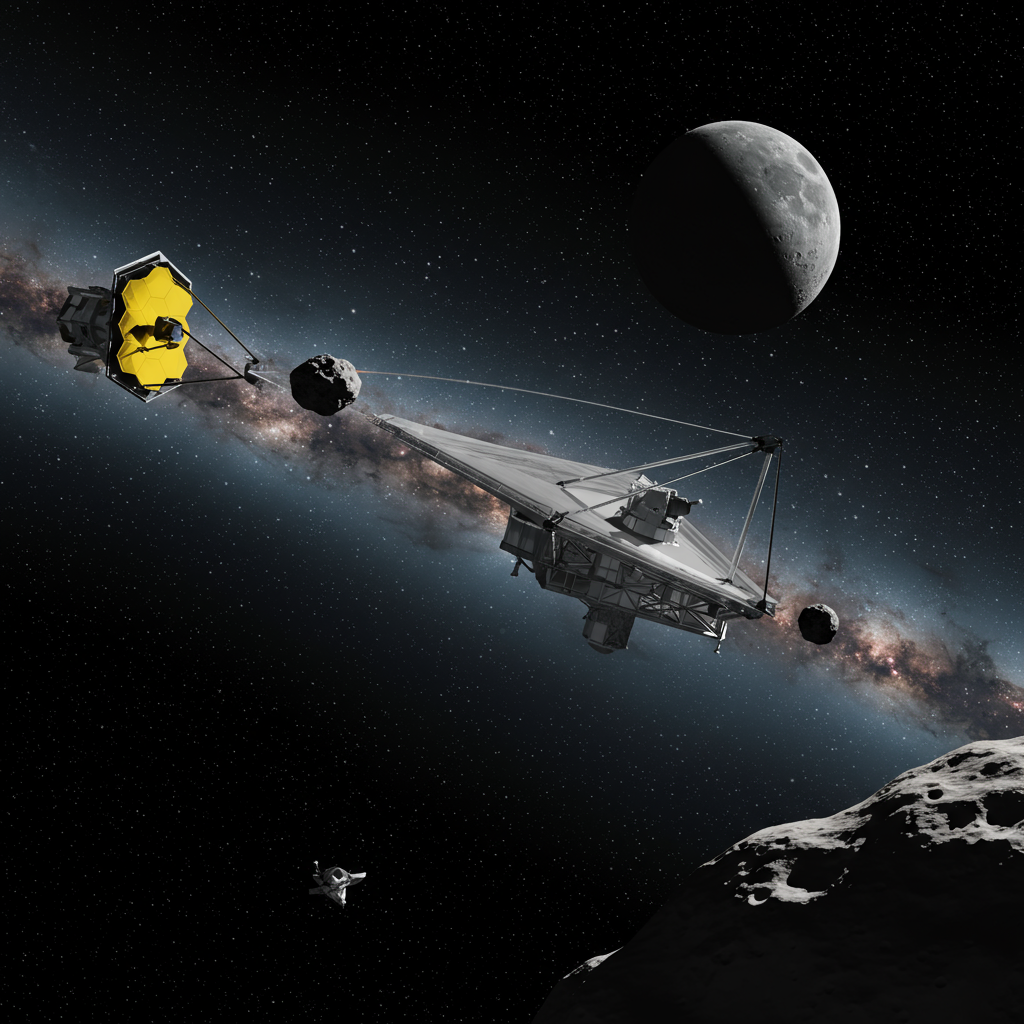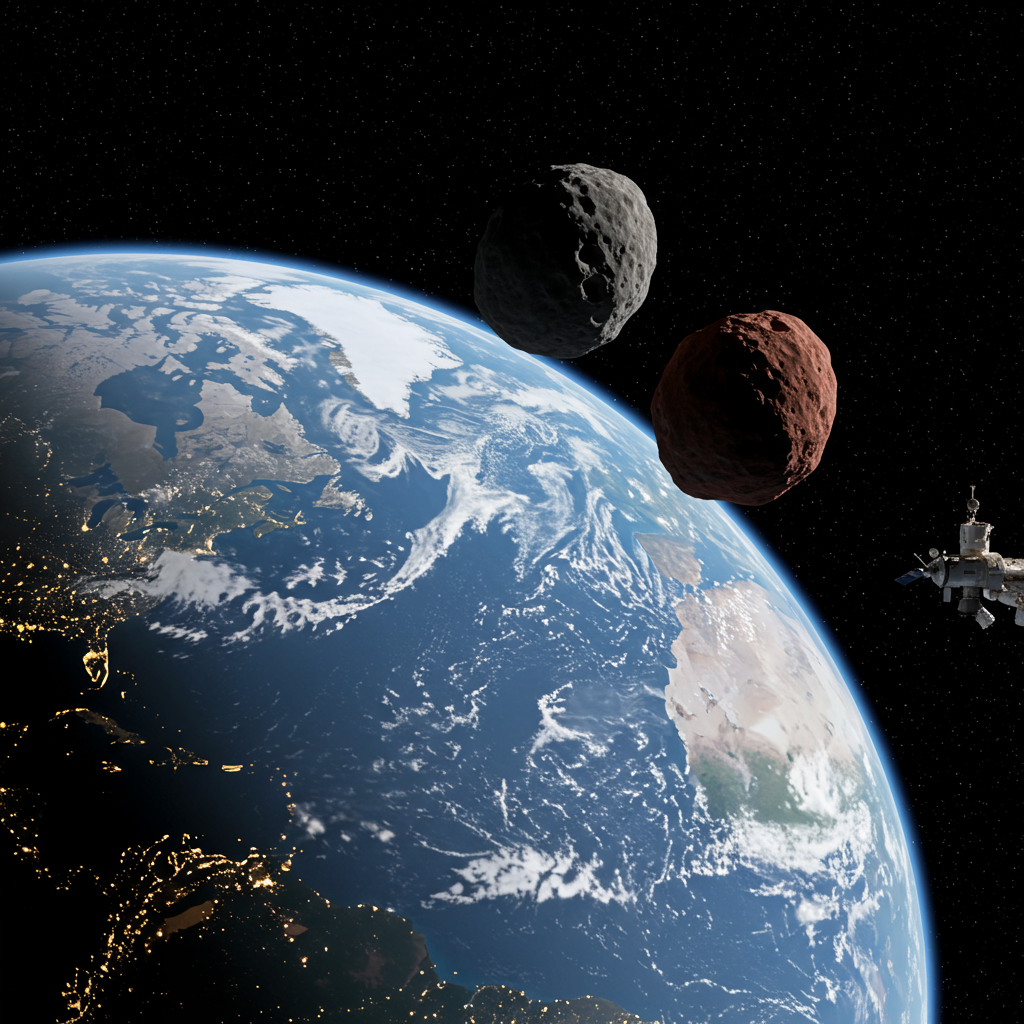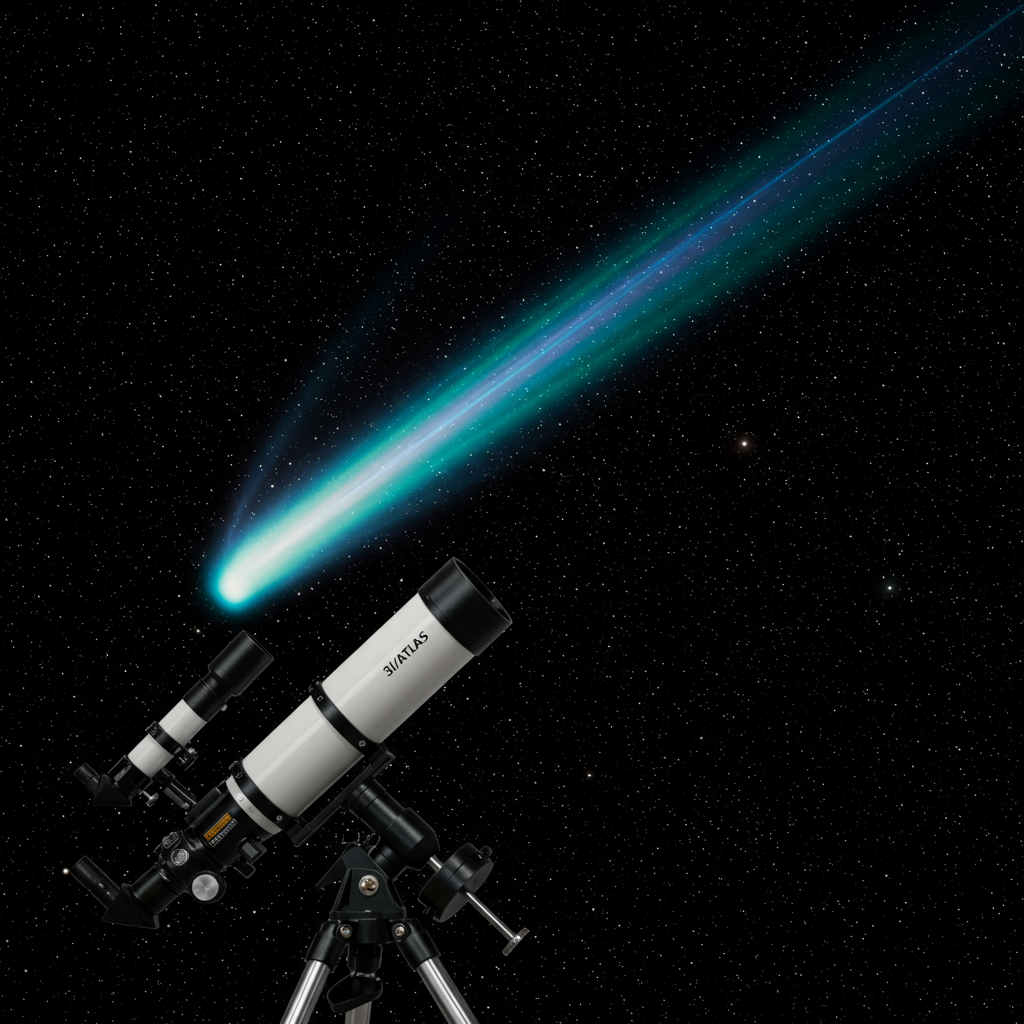A celestial object dubbed the “city-killer” asteroid 2024 YR4, once causing concern for a potential Earth impact, is now drawing attention for a different target: the Moon. Recent observations by the powerful James Webb Space Telescope (JWST) have significantly increased the calculated probability of this space rock colliding with our lunar neighbor in 2032, creating a unique scientific opportunity.
The Asteroid 2024 YR4: From Earth Threat to Moon Target
Discovered in late 2024, asteroid 2024 YR4 quickly landed on NASA’s Sentry Impact Risk Table due to its orbital path bringing it close to Earth. Estimated to be between 174 and 220 feet wide – roughly the size of a sports arena or a 10-story building – its “city-killer” moniker reflects its potential to cause devastating local destruction if it were to hit a populated area on Earth, releasing energy equivalent to hundreds of Hiroshima bombs.
Initially, based on early tracking data, the asteroid showed a brief, historically high probability of impacting Earth in 2032, reaching as high as 3.1%. However, as astronomers gathered more precise ground-based observations in early 2025, the odds of an Earth collision were dramatically reduced and eventually ruled out entirely.
James Webb Telescope Refines the Trajectory
While the threat to Earth diminished, the focus shifted to the Moon. To gain a more accurate understanding of the asteroid’s size, composition, and trajectory, emergency telescope time was allocated to the James Webb Space Telescope. Unlike ground-based telescopes relying on visible light reflections (which can be misleading about true size due to surface reflectivity), JWST’s infrared capabilities measure the asteroid’s heat, providing a more direct estimate of its size and hinting at its rocky composition.
JWST conducted crucial observations in March and May of 2025. Data from these sessions, particularly the May observations, significantly refined scientists’ understanding of the asteroid’s path for December 22, 2032.
Increased Odds for a Lunar Collision
The improved data from JWST and other sources led to a notable increase in the calculated probability of 2024 YR4 hitting the Moon in 2032. The odds rose from a previous estimate of around 1.7% in February, climbing to 3.8% after the March JWST observations, and reaching the current estimate of approximately 4.3% following the latest May data analysis.
While 4.3% might seem low, it’s considered a significant probability in the realm of celestial collision predictions and warrants continued monitoring by the international astronomy community.
What a Moon Impact Would Mean
Should asteroid 2024 YR4 collide with the Moon, NASA assures there would be no threat to Earth. The impact would not alter the Moon’s orbit. However, it would likely create a large, new crater on the lunar surface – a surface already heavily pockmarked by billions of years of impacts.
For planetary scientists, such an event would be a “goldmine” and a “world-first opportunity.” Observing a well-characterized asteroid of this size strike the Moon in real-time would provide invaluable data on the process of massive crater formation. Without an atmosphere to slow it down, the asteroid would hit the lunar surface at full velocity, offering a unique chance to study impact dynamics.
Ongoing Monitoring and Future Insights
Asteroid 2024 YR4 has now moved out of view behind the Sun and is expected to remain beyond observable range until 2028. Scientists plan to study the asteroid again when it returns closer to Earth, which will provide further opportunities to refine its trajectory calculations and the probability of a lunar impact.
The monitoring of objects like 2024 YR4 highlights the importance of global planetary defense efforts. Alongside missions like NASA’s DART (Double Asteroid Redirection Test) and planned telescopes like the NEO Surveyor, tracking near-Earth objects with advanced instruments like the James Webb Space Telescope is crucial for understanding potential future threats and developing strategies to address them. For now, 2024 YR4 remains a fascinating case study, shifting from a potential Earth threat to a compelling target for lunar impact observation in 2032.




